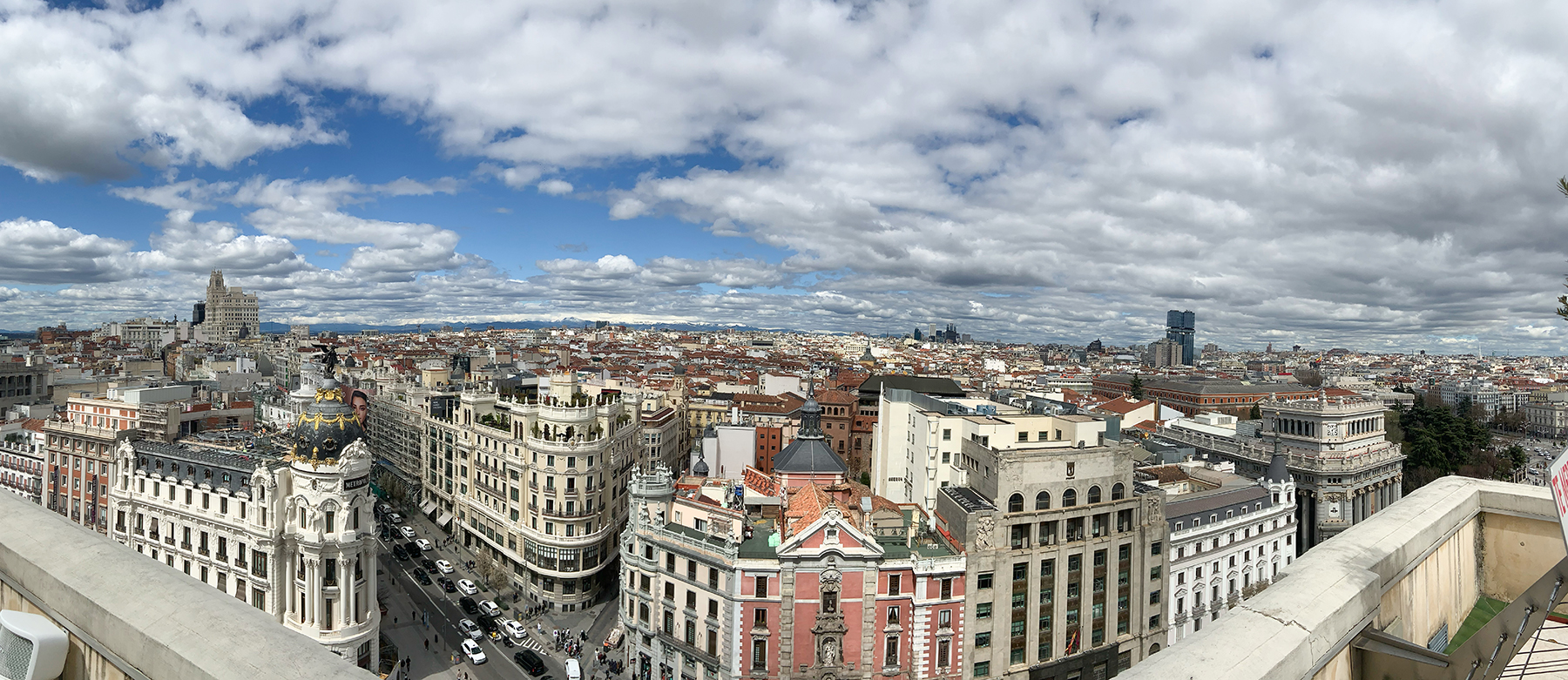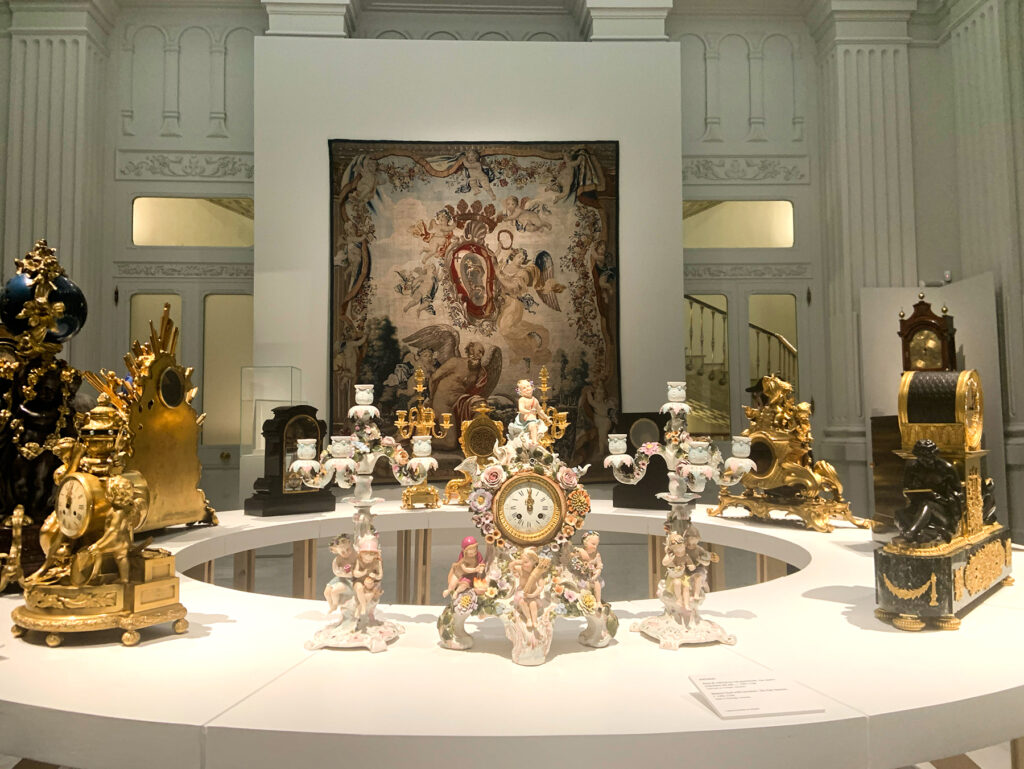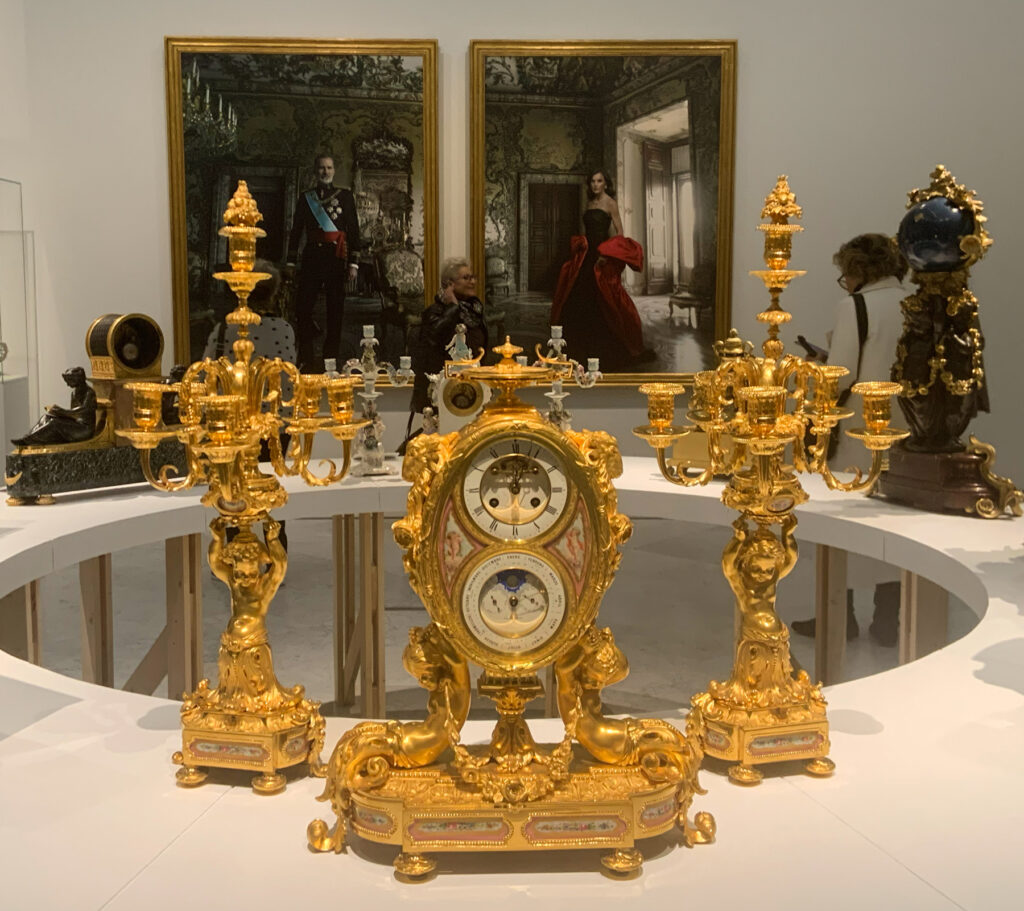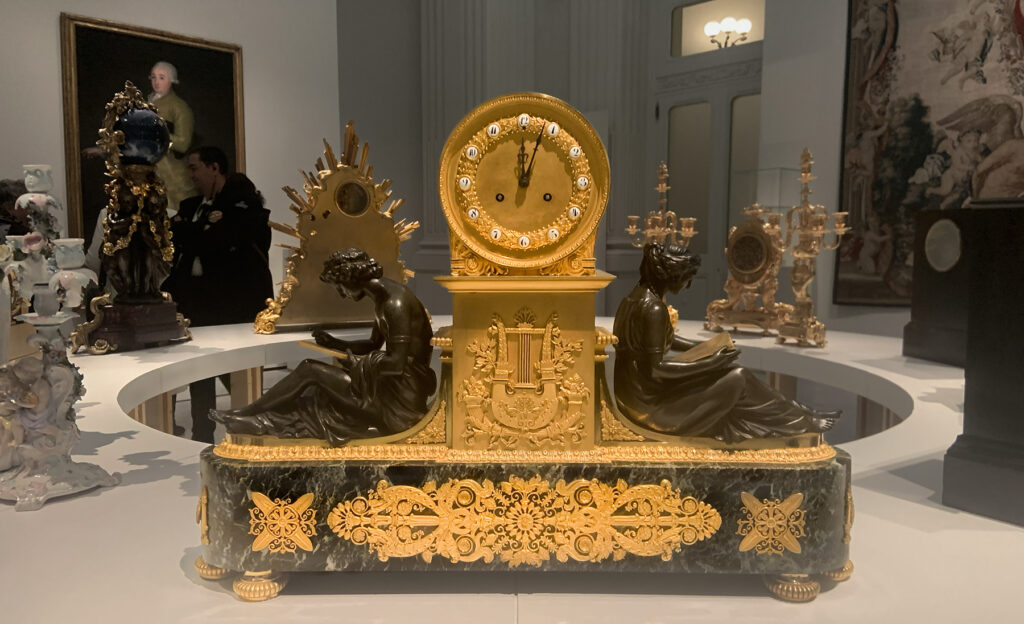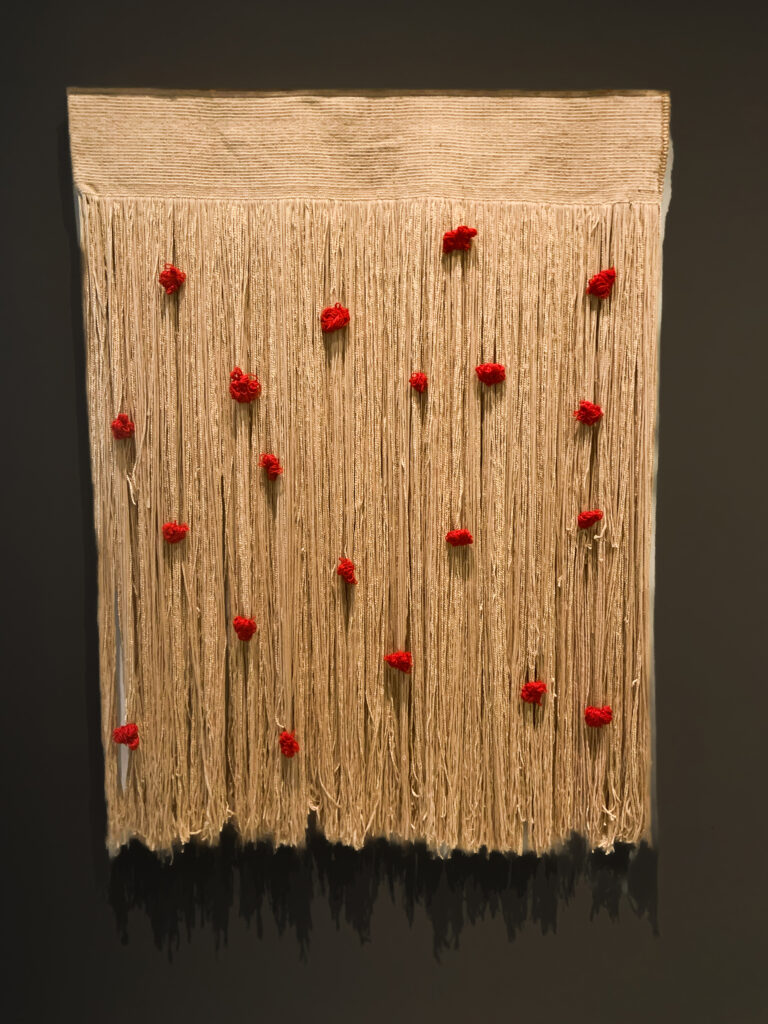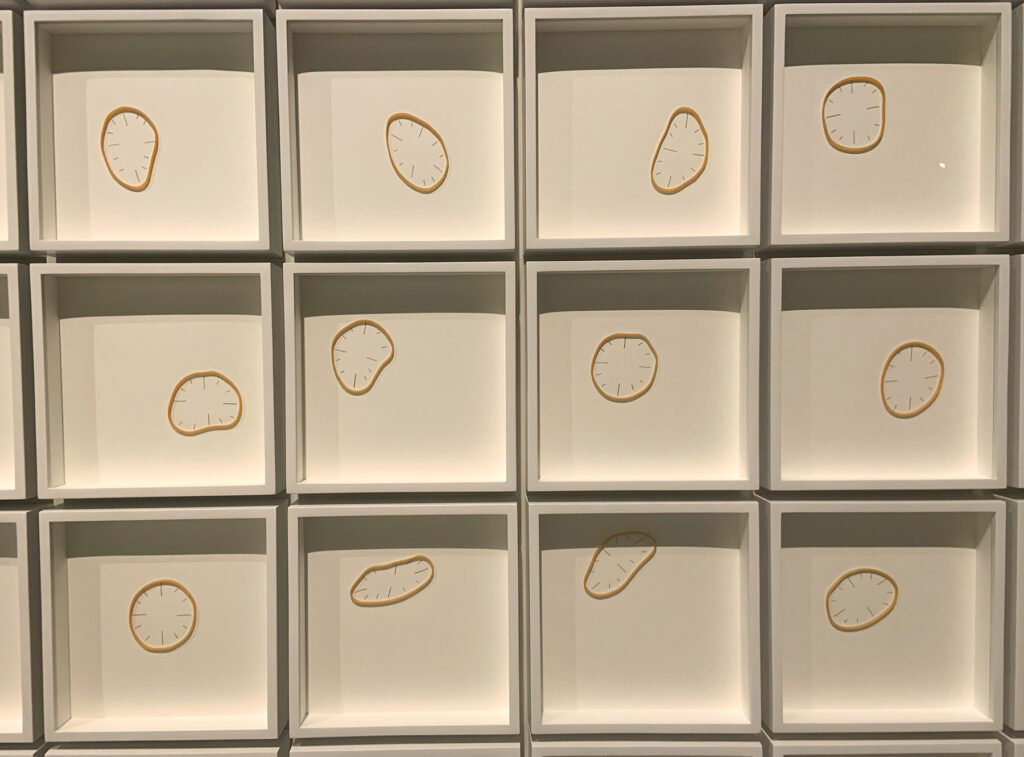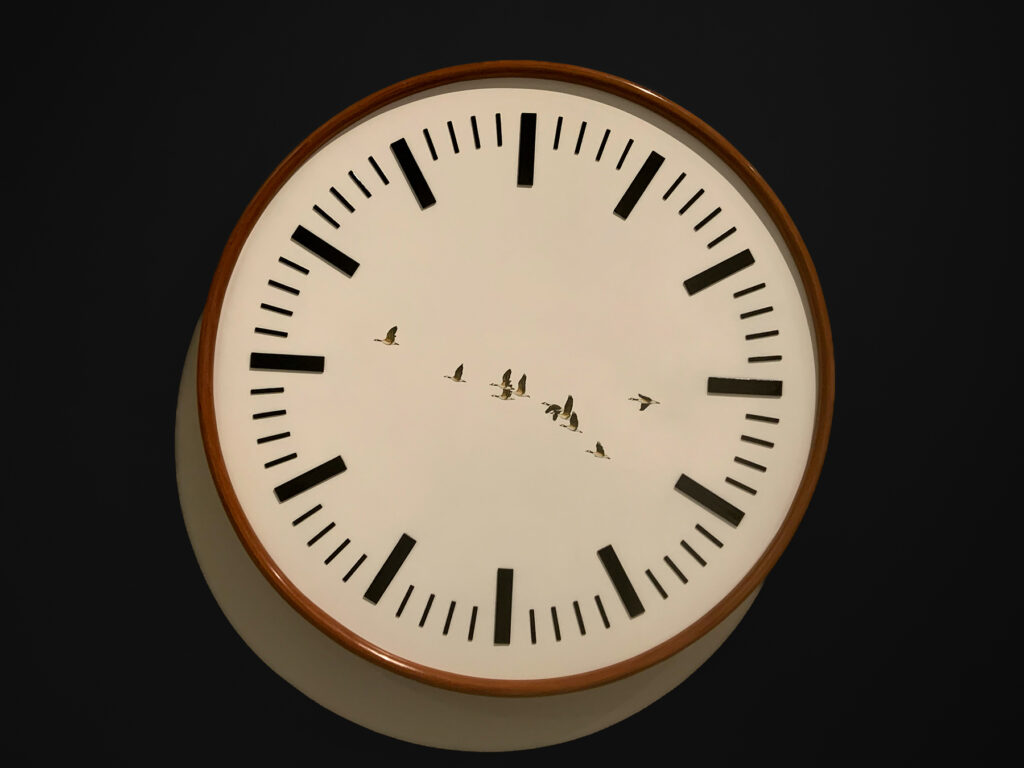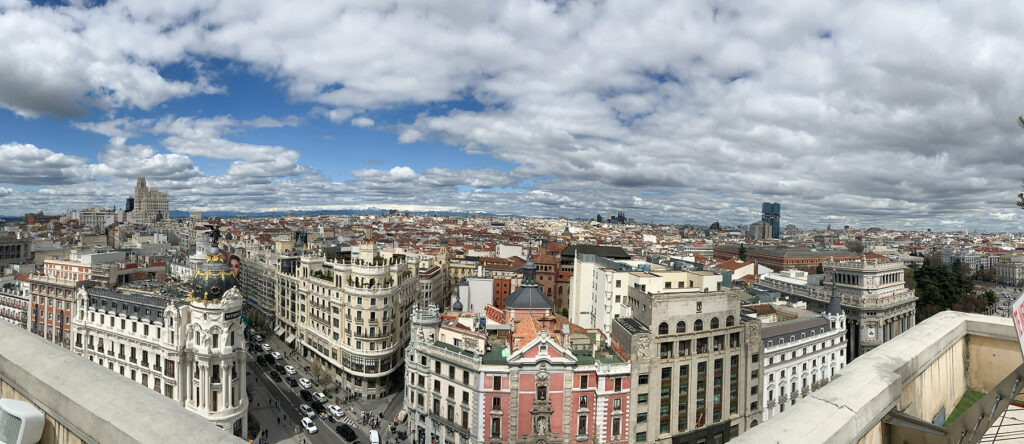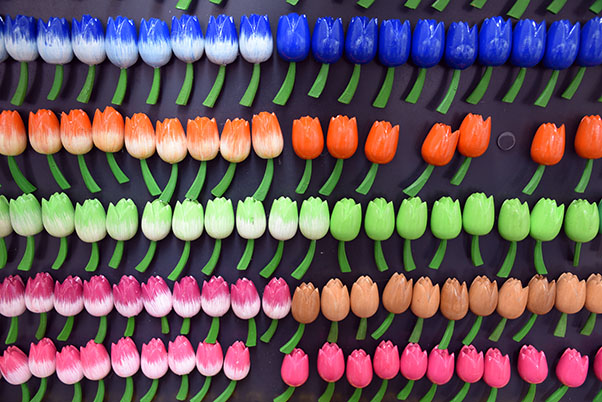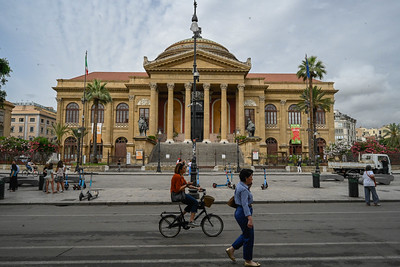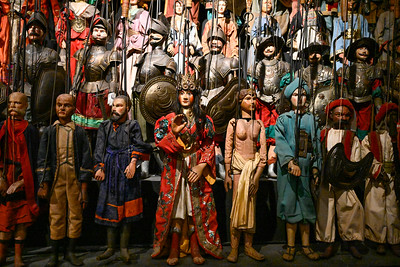La tiranía de Cronos / The Tyranny of Time
For years I have been fascinated by our obsession with making our watches –our instruments of time– fashionable. This impulse has always seem to me to represent a commodification of time that seems to have culminated of late in the Apple watch that everyone seems to feel a need for, that has come to invade and take control over so many aspects of so many people’s daily lives. The need to disconnect has never seemed so urgent to me.
It is for these reasons that the exhibit currently on at Spain’s National Bank, the Banco de España, interested me. If I anticipated hints of irony in an exhibit sporting the term “tiranía” / “tyranny” while hosted by the nation’s prime institution of capitalist authority, my viewing experience did nothing but solidify those initial impressions.
The exhibit is smartly organized into three thematic zones: Threading Portraits Through Time / Retratos al hilo del tiempo; I Have No Time / No tengo tiempo; A Time Without Clocks / Un tiempo sin reloj. Jan Leyniers’s 17th century tapestry “Triumph of Love and Eternity over Time” / “Triunfo del amor y la Eternidad sobre el Tiempo” sits physically and thematically at exhibit’s core.

The tension between notions of a Chronos-based rationalism that emerges in the early modern era (Leyniers’s 17th century) and that has since come to dominate public life increasingly, thanks to institutions such as national banks, and alternative Cupid-based models of being and thinking (spontaneity, passion, unfettered creativity, immediacy) is captured in the image of a despondent god, whose wings fail to lift him, whose symbols (the scythe and the hour glass) lie scattered uselessly on the ground.
It is hard not to sense the irony implicit in the image of Chronos held captive in Cupid’s chains within the context in which it is shown. As the curators tell us in the catalog, this exhibit was inspired by the archival research undertaken by the Banco de España’s Conservation Division, which lead to the publication of a catalogue raisonné of the nearly two hundred items included in their collection. Said items are predominantly the mechanical clocks of the type that began to proliferate ornamentally precisely during Leyniers’s time. Many are on display in the vicinity of the 17th century artist’s tapestry. That is, in the Banco de España’s exhibit, Chronos is accompanied by symbols of his triumph —not “Love’s”– while Cupid is subjugated to the torture of witnessing the extent his (or her) demise. Not only is the room full of clocks of various styles and provenance, portraits of the caretakers and propagators of power and order, of order as power, are carefully arranged on the surrounding walls: portraits of the heads of the Spanish National Bank from the 18th century to the present –by Goya, for instance– and, of Spain’s current king and queen, Felipe VI and Leticia, by the contemporary American photographer Annie Leibovitz. The placement of the royal portraits opposite the 17th century tapestry Cupid enslaving Chronos creates a juxtaposition that goes beyond ironic to me, that borders on the cynical.
At its core, “The Tyranny of Chronos” seems to exhibit not only the interplay of wealth, power and time, an interplay that gathers momentum over time, but the submission of artists such as Francisco de Goya and Annie Liebovitz to that interplay and its momentum.
The two other sections of the exhibit, “I Have No Time” / “No tengo tiempo” and “A Time Without Clocks” / “Un tiempo sin reloj” bring together works by artists who either resist such subjugations, via strategies of subversive resistence (irony) or through nostalgia.
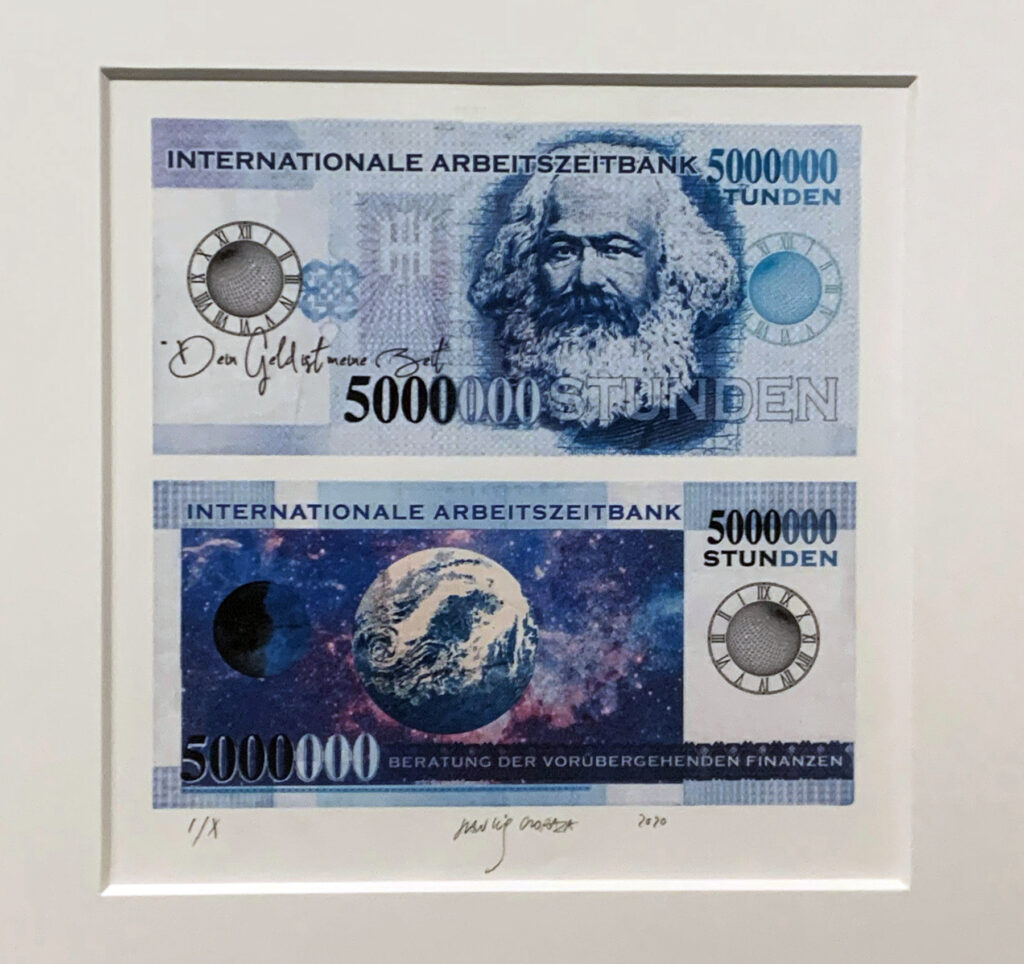
Juan Luis Moraza’s collection of “bills” –the series is titled the “Banco Internacional de Tiempo Laboral” (“International Work Bank”)– pokes fun at the commodification of time in what some may consider late-stage capitalism. The image of Karl Marx on one of Moraza’s bills, with the caption “Dein Gelt ist mein zeit,” is a poignant reminder that currency in any language is nothing but a stand in, a representation, an illusion. It is fake, in the broader scheme of things.
It is that “broader scheme of things” artists featured in “A ‘Time Without Clocks” / “Un tiempo sin reloj” evoke. The tribute that many Latin American artists pay today to pre-industrial rhythms of life is represented by two Guatamalans. Antonio Pichillá’s “Semilla” (“Seed,” 2024) evokes notions of a humanity cognizant of our Earth “as mother; as seed; as plant, fruit, nourishment; and as the science of resilience. It serves as a metaphor for the enduring bonds with the clouds, water, soil, wind, and other life forms that interact in the maize-growing process, as elements in coexistence” (exhibit catalog). In “The Present is Ours” (2018), Ángel Poyón projects his nostalgia for ancestral time, “expansive,” rooted in rhythms of nature, of our organic homeland.
Poyón’s “Lugar imaginado” (“Imagined Place,” 2022) represents a uniquely poignant nostalgic plea for a return to the tempo of nature, with its flock of birds defying the wings (arms) of a clock: to the non-linear patters of experience signaled by the serpent biting its own tail, in Leyniers’s tapestry.
In the end, I’m not sure what to make of our ascent to the rooftop of the nearby Círculo de Bellas Artes, where we feasted our eyes on the resplendent and skyline of a modern fabricated metropolis sparkling under the brilliant sun of an unending spring sky. Maybe we were seeking to experience the dilemmas, paradoxes, tensions and contradictions inherent in the interaction of Eros and Chronos in the 17th century tapestry.
